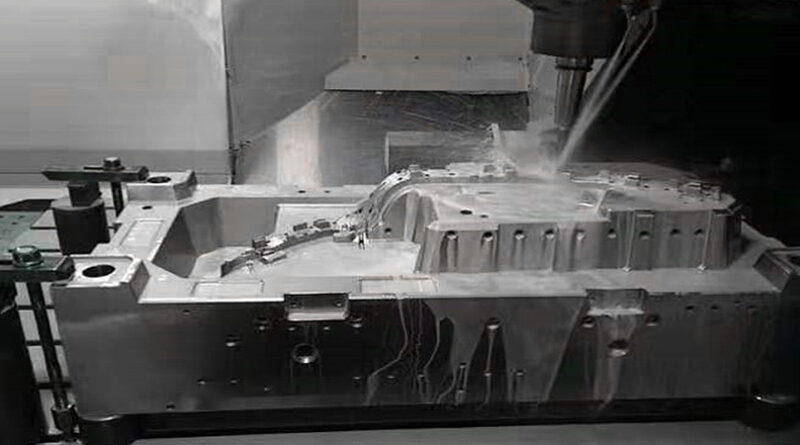Large Part Injection Molding: Techniques for Manufacturing Oversized Components
Large part injection molding is a specialized process used to manufacture oversized plastic components for various industries, including automotive, construction, and aerospace. Producing large parts requires advanced techniques and equipment to ensure strength, precision, and durability. This article explores the key techniques, challenges, and benefits of large part injection molding.
What is Large Part Injection Molding?
Large part injection molding involves creating plastic components that exceed standard size limitations while maintaining the required structural integrity and quality. These parts can range from automotive bumpers and industrial containers to large furniture pieces and appliance housings.
Due to their size and complexity, manufacturing these components requires specialized machinery, molds, and injection strategies to achieve consistent results.
Techniques for Large Part Injection Molding
Producing oversized components involves various techniques tailored to meet the unique demands of large-scale parts:
1. High-Tonnage Injection Molding
High-tonnage machines, with clamping forces ranging from 1,000 to 10,000 tons, are necessary for molding large parts. These machines ensure the mold stays securely closed during the injection process to prevent defects.
2. Sequential Injection Molding
In sequential injection molding, material is injected in stages to avoid incomplete filling and ensure uniformity across large surfaces. This technique reduces the risk of warping and internal stresses.
3. Multi-Point Gate Injection
For large components, using multiple injection points (gates) allows the material to flow evenly throughout the mold. This minimizes the formation of weld lines and improves part quality.
4. Gas-Assisted Injection Molding
This technique involves injecting gas (usually nitrogen) into the mold to create hollow sections in the part. It reduces material usage, decreases part weight, and eliminates sink marks on thick sections.
5. Structural Foam Molding
Structural foam molding is used for large parts that require extra strength and stiffness. The process involves mixing a chemical foaming agent with the plastic material, resulting in a solid outer layer and a foamed core that enhances the part’s rigidity.
Common Applications of Large Part Injection Molding
Large part injection molding is widely used across industries where oversized components are essential:
- Automotive: Bumpers, dashboards, fenders, and truck bed liners.
- Appliances: Washing machine tubs, refrigerator liners, and large housings.
- Construction: Plastic pallets, outdoor furniture, and storage tanks.
- Aerospace: Interior panels and cargo bay components.
- Consumer Products: Waste bins, playground equipment, and sports gear.
Challenges in Large Part Injection Molding
Manufacturing large components comes with unique challenges that require careful planning and expertise:
- Material Flow and Cooling: Ensuring consistent material flow and cooling can be difficult due to the size and complexity of the mold.
- Part Warping: Large parts are more prone to warping or shrinkage during the cooling process, requiring precise control over temperature and pressure.
- Machinery Requirements: High-tonnage machines and large molds increase initial costs and require significant floor space.
- Cycle Time: Longer cycle times are needed to fully mold and cool large parts, which can impact production efficiency.
Benefits of Large Part Injection Molding
Despite the challenges, large part injection molding offers several key benefits:
1. Cost-Effective Production
Once the mold is created, large part injection molding provides a cost-effective way to produce high volumes of large components with consistent quality.
2. Durability and Strength
Large injection-molded parts are often more durable and resistant to environmental stress than those made from alternative processes like welding or assembling smaller components.
3. Design Flexibility
Complex designs with intricate details can be produced in a single piece, reducing assembly time and improving structural integrity.
4. Material Efficiency
Techniques like gas-assisted molding and structural foam molding help reduce material usage without sacrificing performance.
5. Customizable Solutions
Manufacturers can choose from a wide range of materials and finishes to meet specific requirements, such as UV resistance, flame retardancy, or chemical resistance.
Conclusion
Large part injection molding is an essential process for producing oversized plastic components that are strong, durable, and cost-effective. By employing advanced techniques such as high-tonnage molding, gas-assisted injection, and structural foam molding, manufacturers can overcome challenges and deliver high-quality large parts for a variety of applications.
Whether you need large automotive components or durable construction materials, partnering with an experienced injection molding provider can ensure your project’s success and help you achieve the best results.




